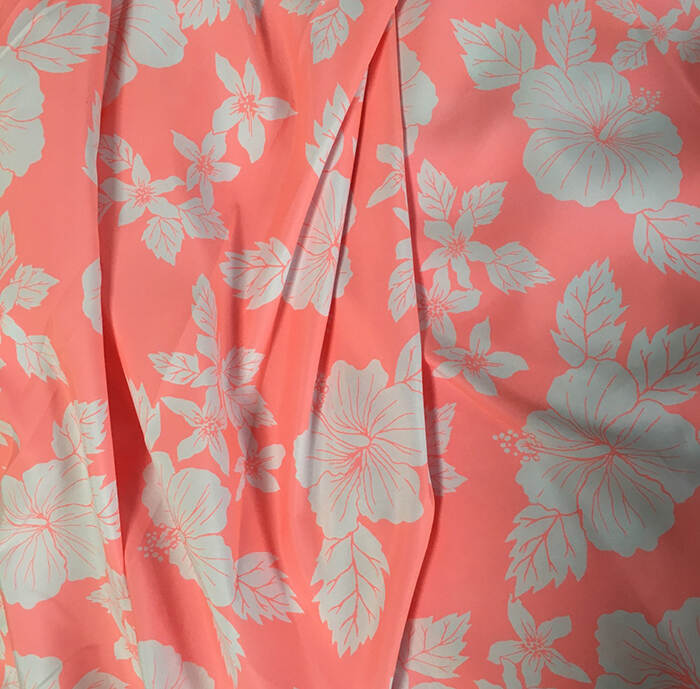Printing beach pants fabric

Polyester fibers account for a large part of the fabrics that people wear now, and in addition, there are acrylic fibers, nylon fibers, spandex fibers, etc. Polyester fiber, commonly known as "polyester", was invented in 1941 and is currently the largest variety of synthetic fibers. The biggest advantage of polyester fiber is that it has good wrinkle resistance and shape retention, high strength, and elastic recovery, and is firm and durable, wrinkle-resistant, non-iron, and non-sticky, which is the main reason why modern people like to use it.
Polyester fibers can be spun into polyester staple fibers and polyester filaments. Polyester staple fibers are polyester staple fibers, which can be divided into cotton staple fibers (length 38mm) and wool staple fibers (length 56mm), respectively. For blending with cotton fibers and wool. Polyester filaments are polyester filaments. As clothing fibers, their fabrics can achieve wrinkle-free and iron-free effects after washing.
Characteristics of polyester
High strength, good elasticity, heat resistance, heat insulation, abrasion resistance, and corrosion resistance are relatively good, but dyeing and hygroscopicity are relatively poor, but the color fastness is good, not easy to fade. Because there is no specific dyeing group on the polyester molecular chain, and the polarity is small, it is difficult to dye, the dyeability is poor, and the dye molecules are not easy to enter the fiber; it is sultry to wear, and it is easy to carry static electricity and stain dust, which affects Aesthetics and comfort. However, it is very easy to dry after washing, the wet strength hardly decreases, and it does not deform. It has a good wash and wears performance.
Usage of polyester
Polyester (polyester) fabrics are non-natural synthetic fibers and are often used in autumn and winter fabrics, but they are not suitable for underwear. Polyester is acid-resistant, use neutral or acidic detergents when cleaning, and use alkaline detergents to accelerate the aging of the fabric. In addition, polyester fiber (polyester) fabrics generally do not require ironing, and low-temperature steam can be lightly ironed.
Nowadays, many garment manufacturers often blend or interweave polyester with various fibers, such as cotton polyester, wool polyester, etc., which are widely used in various clothing materials and decorative materials. In addition, polyester fiber (polyester) can be used for conveyor belts, tents, canvases, cables, fishing nets, etc. in industry, especially polyester cords for tires, which are close to nylon in performance. Polyester can also be used for electrical insulating materials, acid-resistant filter cloth, medical industrial cloth, etc.
